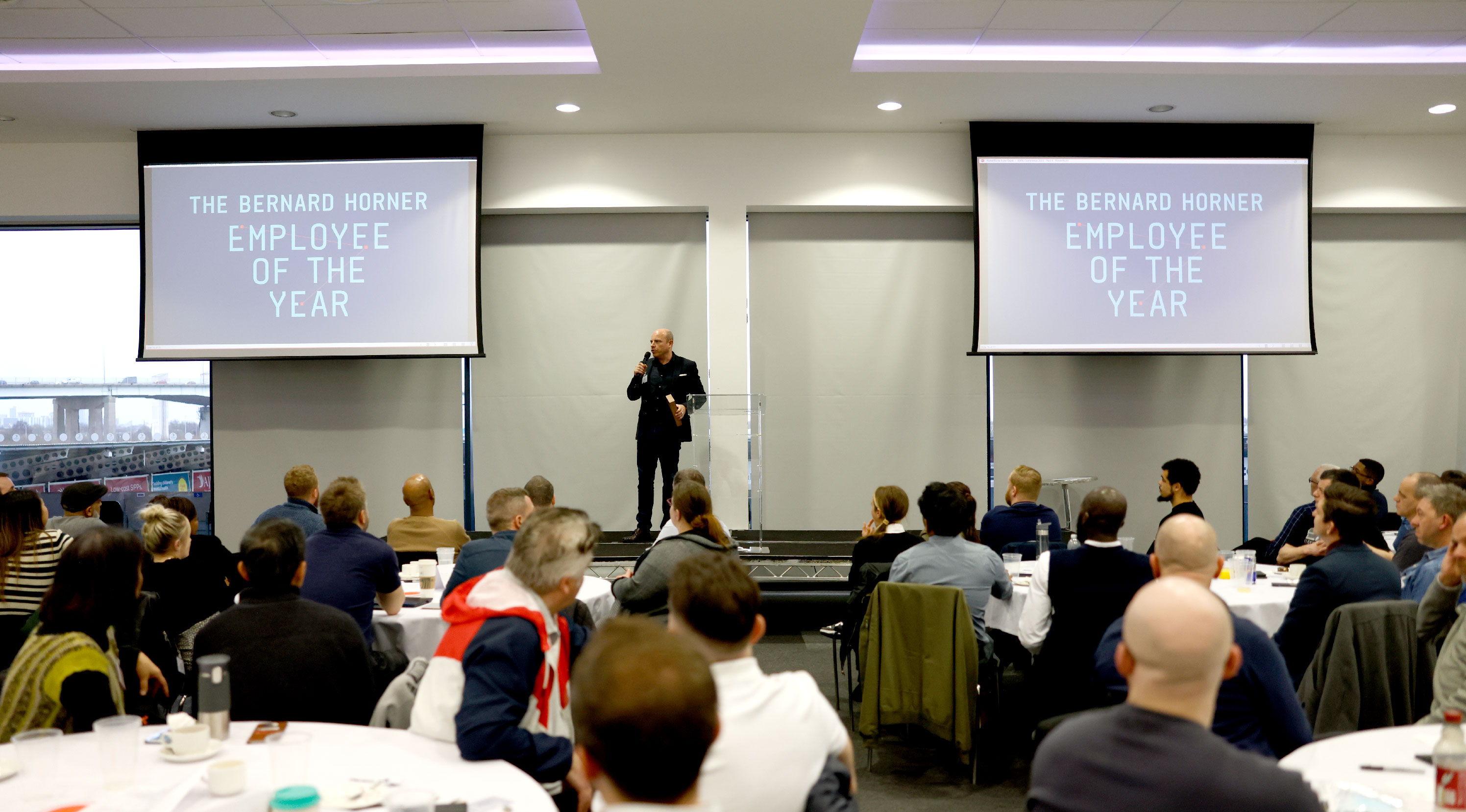 Employee Awards 2022
Employee Awards 2022
4 April 2023
Read more

Euroshop, the world’s leading retail trade fair, attracts leaders in the retail industry every year – and 2023 was no different. Visitors and exhibitors travelled from all five continents to attend the event to learn about upcoming solutions in the retail space. With sustainability at the heart of 100% Group, our team walked the floor and listened to experts talk about the future of retail to inspire our own vision. We noticed that sustainability was everywhere! Not only was the messaging around the event prominent, but there was also ‘green’ signage and material on display as well as art exhibitions made from reused materials. With consumers becoming more conscious about the environment and governments committed to net zero carbon emissions, sustainability is no longer an option for retailers. However, whilst the latter is at the forefront of the ESG agenda for businesses, many will have to grapple with dwindling budgets at least in the short term and consider how this will impact their ability to make sustainable decisions.
What do retailers need to be mindful of?
Sustainability isn’t just a buzzword – it requires action. Retailers who ‘talk, the talk’ but don’t take meaningful action will soon fall behind legislation in the next few years, putting themselves at risk of losing customers to competitors and potential government penalties. With environmental impact continually growing in importance to businesses it’s not hard to imagine that reporting on your carbon footprint will soon become just as normal as submitting tax returns (large companies have already started to do this). This will require an increased focus on measurement as well as low-carbon solutions. At a time when many retailers are turning to digital-first solutions to market products, considerations also need to be made around the affect this technology is having on their carbon footprint. For example, who is thinking about the energy usage of a digital display and who is measuring its usage? Whilst digital alternatives might appear more efficient and cost-effective than using printed marketing collateral made from sustainable materials, there needs to be efforts taken to find the right balance between the two.
Where should efforts be focused?
There were some key themes that caught our attention at Euroshop that we believe will play a huge role in helping retailers become more sustainable in a creative and measured way.
Firstly, businesses should start to consider circular solutions. This means avoiding the use of non-reusable resources or preserving and enhancing renewable ones. There were some really exciting concepts and innovations showcased at Euroshop including exhibition stands made from fabric materials which can then be turned into a variety of new products such as housing insulation; shopping baskets made from POS holders and shelf stripping; 3D printing of displays using recycled plastics; and commercial fridges turned into shopping bags and clothes. In tandem, retailers should assess how the concept of circularity can also be incorporated into other production processes.
Next, it’s vital that companies start reporting on the impact of their projects; this means measuring the data, conducting analysis, and then acting on it. There is currently a lack of control surrounding the reporting and measurement of impact and as a result, there are more and more solutions popping up that seek to address this issue. Measurement tools on the market are being designed to improve traceability and transparency to better support brands and retailers in their sustainability efforts. This includes the use of dashboards and other reporting methods to help present data and deliver actionable insights to key decision makers.
Where to start with your retail installations?
With the profile and importance of sustainability on the rise, so to will the demand for better information on the impact of retail campaigns. Once this data is shared, there will be an expectation of reductions, improvements, and efficiencies. Here is where retail installations can become part of the sustainability conversation. Up until now, the challenge has always been that retail businesses are not considering the end-of-life of the campaign until it has ended. This is problematic as it limits the potential reuse, repair and recycling options for materials, and the cost associated of processing the materials can be unexpected. Creating an end-of-life plan at the beginning of the design stage will help to ensure circular solutions can be achieved; and should be considered as important as where the display is going in the store, what materials will be used, and what it’s going to look like. Be sure to take steps to measure each aspect of the campaign from design through to end-of-life and apply learnings to future campaigns.
At 100% Group, we are increasingly receiving enquiries related to sustainable retail display solutions and our role is to continue to help our customers take a responsible approach. Talk to us about your next project, here.